Everything you need to know about long-haired toy terriers
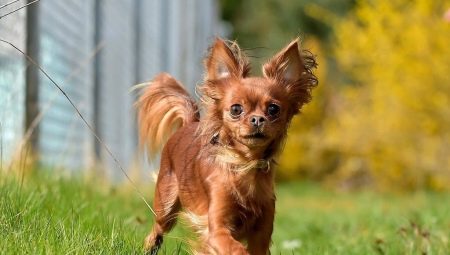
Russian Long-haired Toy Terrier is a compact decorative breed of dogs, distinguished by fearlessness, high intelligence and lively temperament. Miniature animals have an attractive appearance and are quite capable of competing with foreign counterparts. Today the Russian Toy, both long-haired and short-haired, can be seen at international exhibitions, including as a champion. But for many years the breed did not receive recognition on the world stage and was considered exclusively a national treasure.
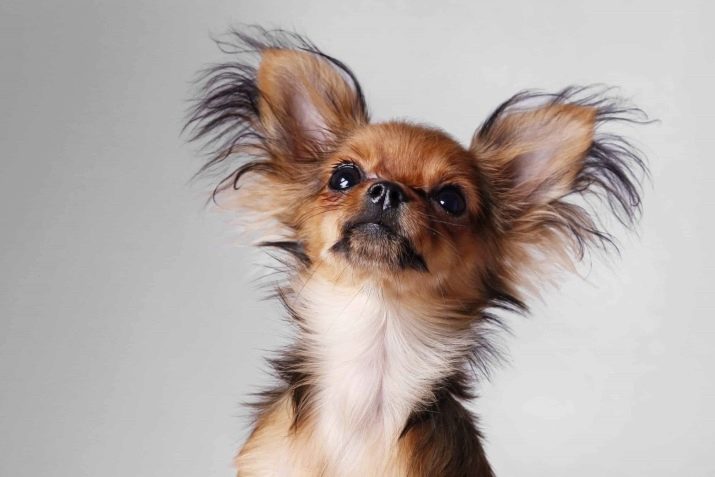
Origin story
The Russian toy, and earlier - the Moscow long-haired toy terrier, was born due to the peculiarities of the political system in the USSR. The breed owes its appearance to the "Iron Curtain" and the general shortage of decorative breeds in post-revolutionary Russia. The once popular English Toy Terriers, declared to be relics of the bourgeois past, were almost completely destroyed as a class even before the beginning of the Second World War.
The remaining dogs were difficult to classify as purebred.... But the import of miniature toys from Germany in the post-war years nevertheless forced domestic breeders to begin their own experiments to revive the former fashion for decorative animals.
For many years, enthusiastic breeders acted almost blindly: they were confident that they were recreating the lost livestock of the English breed. But the Moscow Toy Terriers, as it turned out, acquired their own characteristic appearance. They were characterized by diminutiveness: the size turned out to be 1.5 times smaller than that of their foreign counterparts, the shape of the skull and physique also turned out to be radically different.In addition, by 1958, offspring with the dominant longhaired gene were obtained from the crossing of smooth-haired parents.
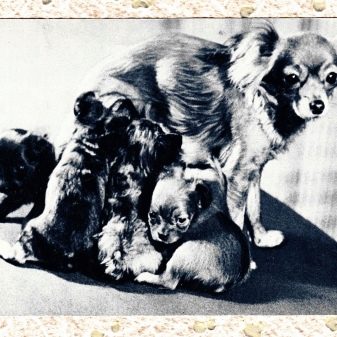
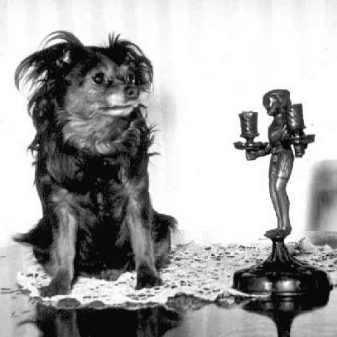
Through the efforts of breeders, the feathering that appeared on the paws, tail, ears was able to be fixed as a breed characteristic. This is how the Moscow long-haired toy terrier appeared, charming and unlike anyone else. Until 1996, the breed existed rather on an amateur level, and only after the formation of a national club, exhibitions began to be held and official documents for puppies were issued.
Not everything went smoothly with international recognition. But in 2006 the FCI still assigned the breed an individual number 352 and included it in the register as conditionally admitted to participate in international shows. True, without revealing any features of similarity with the terrier, both varieties - both smooth-haired and long-haired - were endowed with a single name "Russian toy". The dogs were admitted to the competition for the title of International Champion (INT CH) in 2017 after full recognition. The American Cynological Federation, by the way, gave Russian toys admission to their dog shows back in 2008.
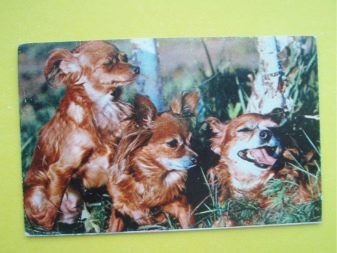
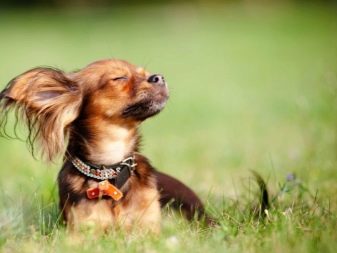
Description of the breed
The Russian Toy, or, according to the outdated name, the Moscow Long-haired Toy Terrier, is a shaggy compact dog with an elegant build and thin bones. He retains grace not only at a young age. An adult Russian toy measures at the withers from 20 to 28 cm and weighs no more than 3 kg. Refinement of constitution does not prevent the dog from remaining a strong mobile individual without behavioral and genetic problems.
Today fluffy Russian Toy puppies are born only to long-haired parents, and great attention is paid to purebred breeding. The outer hair of this line is up to 5 cm long, can be straight and slightly wavy. Feathers are formed on the ears in the form of a fringe, on the paws.
The list of acceptable colors includes red (classic and tan), black, blue and tan with tan, cream. On a bright red background, the spots are most often chocolate, purple.
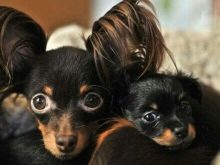
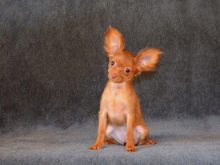
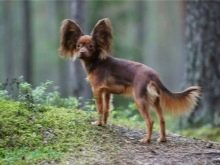
The colors of wool that reduce the assessment of appearance include zoned and black-and-back options. In addition, solid black, chocolate (brown), purple and blue are not too welcome. All variants of spotted, marble, piebald and tiger colors are referred to tribal marriage. They are considered unacceptable for breeding use. Defects are white spots on the throat, abdomen, skull, pronounced curliness of the coat. A detailed description of the breed, according to the standard, includes the assessment of the dog on many grounds.
- Frame square format with a weakly pronounced withers, a straight back line. The croup is below the shoulder blades, sloping, rounded. The chest is clearly defined, oval, deep. The line of the abdomen is taut, with a raised bend.
- Neck long, with a high set, has a slight but noticeable bend.
- Limbs long, dry, graceful. The shoulders are of equal length to the shoulder blades. The hind legs are straight, have a slightly wider set, the thighs are muscular, the legs are compact, tightly compressed, oval in shape.
- Tail can be of natural length or docked. At natural length, it is crescent-shaped, located at the level of the back or slightly raised above it.
- Head with a compact rather wide skull, poorly expressed flat cheekbones. The muzzle has a pointed appearance, the stop is clearly defined. The nose has a black or brown tint, it is proportional in size, the pigmentation of the lips is black.
- Bite scissor-shaped, incomplete completeness of teeth is permissible (no more than 2 incisors per jaw).
- Ears large, thin, set high, directed vertically upward and slightly to the sides.
- Eyes large, rounded, slightly convex, widely spaced. The iris can be darker or lighter depending on the main color scheme.
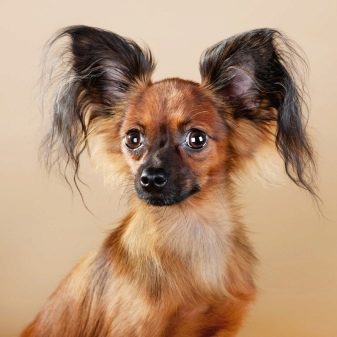
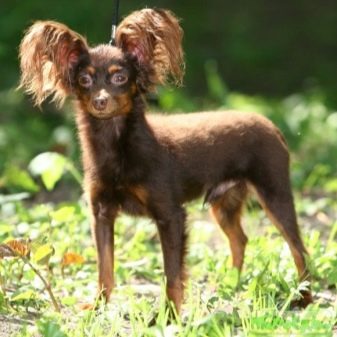
Breed defects include any non-compliance with the standard. Growth over 28 cm, low tail set, wrinkles on the ears, any type of bite, except for a scissor bite, is considered undesirable. Disqualifying malformations include dwarfism: the body weight of an adult dog should not be less than 1 kg.
Animals with marbled, spotted colors, pure white wool, tiger stripes are sent to marriage. Vices of behavior: increased cowardice, manifestation of aggression lead to the fact that the animal is not allowed to breed.
An incorrect physique with a violation of the basic type of constitution is also considered an unacceptable defect.
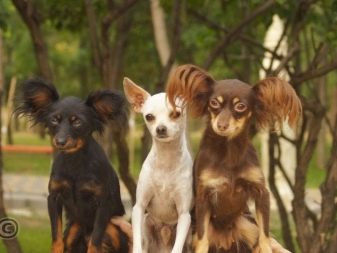

Character
Lively, cheerful dogs - Russian Toy - are able to bring only positive impressions into the life of their owner. The peculiarities of the character of this breed imply a constant need for close communication with the owner. An easily excitable temperament and kind disposition turns both a puppy and an adult dog into a favorite of the whole family, capable of cheering a baby or dispelling the sad thoughts of an adult.
Despite the diminutive size, Russian toy is a mini-hurricane capable of causing a commotion in a house or apartment. Puppies are especially playful; out of boredom, they can start to spoil furniture or things. In addition, toys bark quite loudly, they refer to the very "calls" by which not a single intruder will pass.
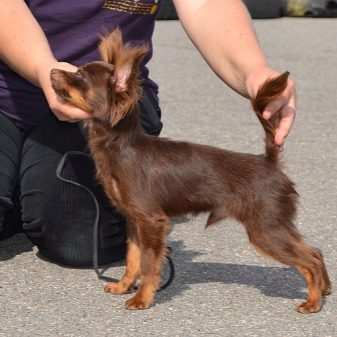
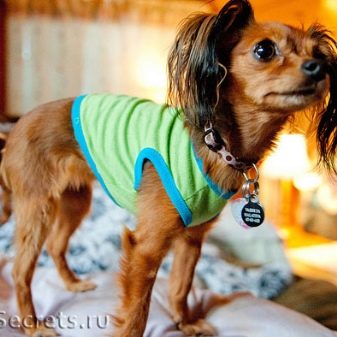
Breeders note that miniature toy terriers have a lively, quick mind, their intellectual abilities are enough to master many commands.
These dogs are good psychologists and manipulators, they use their charm to get an extra piece of food or climb onto a desired couch to the owner. But in combination with a light disposition and incredible charm, this character trait can hardly scare away breed lovers from buying a pet.

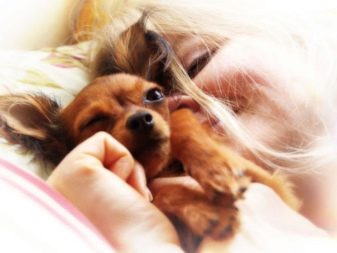
Life span
A healthy animal reaches age easily 10-15 and even 20 years, keeping a puppy's enthusiasm until old age. These dogs are not prone to the manifestation of genetic defects, they have strong immunity. But due to the convex shape of the eyeball, they can suffer from cataracts, retinal atrophy, conjunctivitis. A fairly large skull can contribute to the development of hydrocephalus.
Often the owners themselves are to blame for the health problems of the pet. For example, giving a Russian toya smoked and salty food from your table can help develop pancreatitis.
Careless handling of animals, especially by children, can lead to fractures of the delicate bones of a graceful dog.
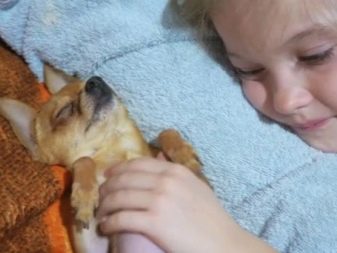
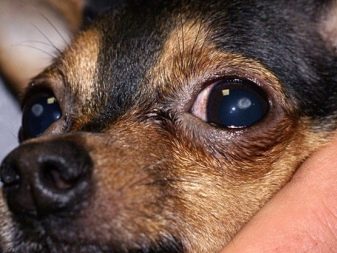
Maintenance and care
Proper care of fluffy puppies and adult dogs consists of a whole range of measures to ensure the pet maintains a neat presentable appearance. A Russian toy with long hair needs periodic hygienic haircuts at least once every six months. It is not recommended to shorten the coat if less than a month is left before the show: it will not have time to grow to the length stipulated by the standard. All types of toy terrier haircuts in this case are divided into several types.
- Model. A fancy approach allows you to both do with the thinning of feathers and create unusual patterns on the body. In addition, you can make an original hairstyle using decorative rhinestones, hairpins, weaving. This is also easily handled by a professional groomer who is well aware of the intricacies of the breed.
- Hygienic. Hair that interferes with the animal is removed, and long feathers are shortened. In some cases, a haircut is done before medical procedures, taking into account the characteristics of the surgical intervention.
- Classic. They involve improving the appearance of the dog without significantly shortening the coat. The main attention is concentrated on the nape, tail, paws, ears. Hair of uneven length is removed, a beautiful silhouette is formed.
- Under the puppy. The coat is shortened, resembling outwardly puppy down.Such a haircut is considered summer, it helps the dog to endure the heat more easily.
- For girls... Here, an unusual technique is used to shorten the hair on the paws, while preserving the elegant feathering on the ears and tail. The silhouette is light and sophisticated, and limb hygiene is minimized.
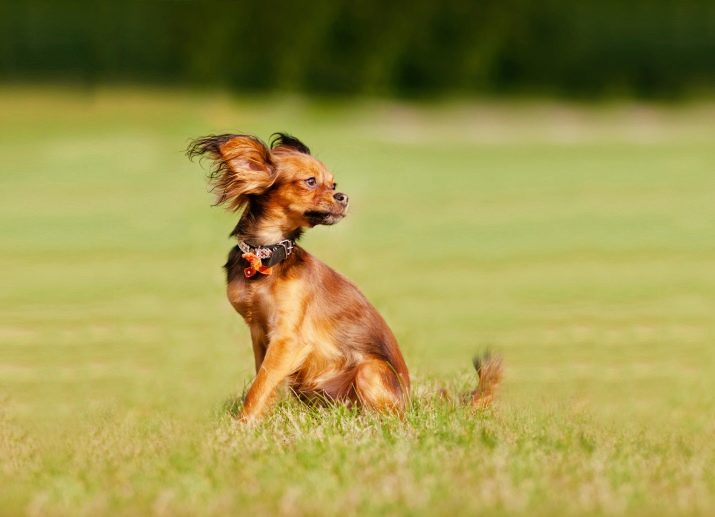
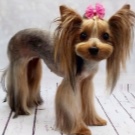
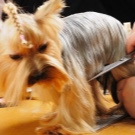
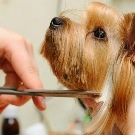
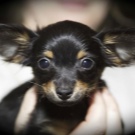

Hygienic care for a Russian toy is also not difficult. A compact animal needs a separate place to sleep and rest: it is better to refuse joint sleep due to the fragility of the dog's bones. For a walk in the cold, you can buy a blanket or jumpsuit in size. Body tremors should not be mistaken for a sign of freezing: this is a manifestation of nervous excitement, it indicates a surge of emotions experienced. Among the mandatory hygiene procedures for a dog, you will definitely need to carry out:
- untangling wool - several times a week with a fine comb or metal comb;
- removal of tangles - soft fluffy coat is prone to their formation;
- bathing - no more than once every 3 months, if there is no urgent need, the dog's skin tends to dry out;
- brushing teeth - needed weekly with the use of veterinary pastes for the prevention of tartar;
- ear sanitization - they can be affected by ticks, in addition, the breed is prone to otitis media, frequent examination is recommended;
- cleansing the corners of the eye from pollution and organics;
- trimming the tips of the claws - it is needed every 20-30 days.

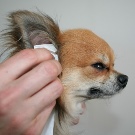
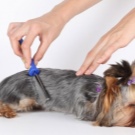
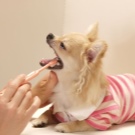
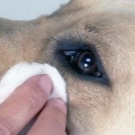
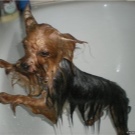
Despite the fact that, in general, the Russian Toy is a healthy and strong dog, it is worth paying maximum attention to the conditions of its keeping.
It is necessary to avoid drafts, protect the pet from jumping from a height... Nervous shocks are contraindicated for the animal; it is better to create a calm atmosphere at home. Walking representatives of the breed need moderate, they easily learn to visit the tray and are not inclined to "miss" past him, maintain cleanliness in the house.
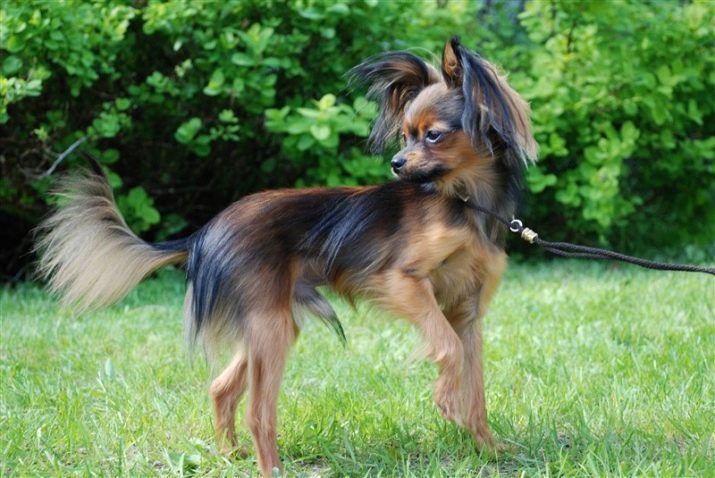
What and how to feed?
It is better to organize feeding of the Russian Toy in the same way as it was organized in the nursery. If the puppy is already accustomed to natural food, it is possible not to transfer it to dry food. Representatives of this breed perfectly perceive beef and poultry... They need to be chopped before serving. And you can also use offal, once a week give boiled ocean fish.
Toy Terriers take vegetables well in their diet. Small dogs eat well carrots and beets, cucumbers, cabbage (can be seasoned with vegetable oil). As a delicacy, apples and pears, a banana cut into pieces, are suitable. The share of cereals in the diet reaches 30%. Better to choose hypoallergenic, low-calorie options: rice, buckwheat, oats... Corn and wheat are not very useful for Toyam.
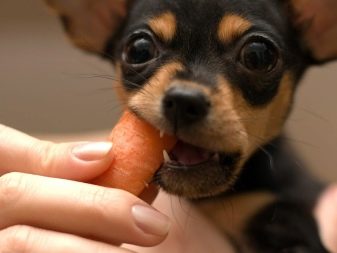
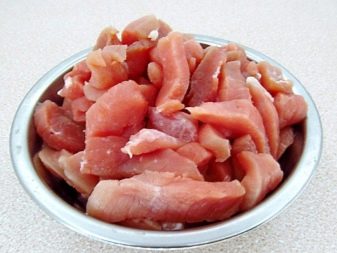
Despite the general usefulness of fermented milk products, it is often not worth giving them to small dogs. Whole milk is only given to puppies. Cottage cheese, kefir, yogurt are given no more than 2 times a week. It is excluded to receive additional feeding during the day, it is impossible to allow eating food found on the street.
Among the natural food that is strictly prohibited for the Russian Toy, one can single out spices, sausages and sausages, chicken egg white. Nuts, butter, sour cream and other high-calorie foods will not benefit the dog. Havepickles and smoked meats are a threat to the dog's health.

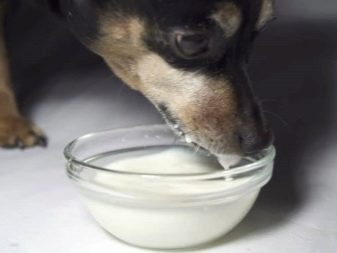
A balanced diet can be provided to a pet through the correct selection of dry food.
A compact animal needs in specialized nutrition, taking into account his needs for calories, nutrients. Cheap economy food can be harmful to your dog's health. But super premium and holistic diets do not have this disadvantage. They have everything you need, you just need to take into account the level of mobility, the age category of the toy.
The frequency of feeding an adult animal is no more than 2 times a day. Russian toy is prone to obesity, it is important not to exceed the recommended calorie content.Puppies up to 3 months old are fed 5-6 times a day, night and late meals can be kept. Up to six months, food is dispensed 3-4 times a day; by a year, the dog must eat twice a day.
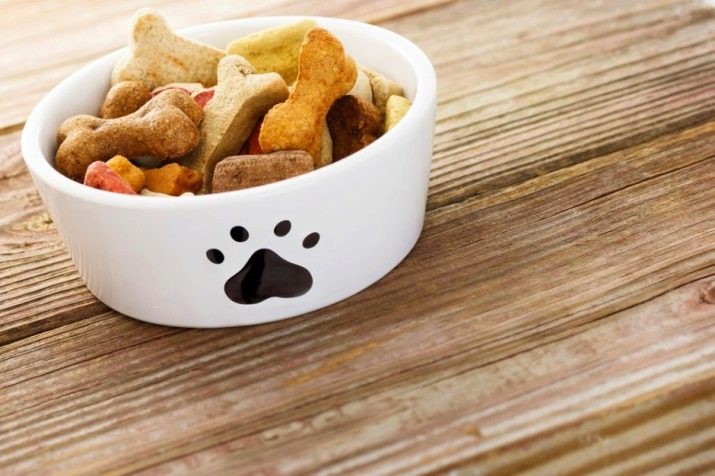
How to educate?
The upbringing of the Moscow long-haired toy terrier, or, as it is now called, the Russian toy, begins with mastering the basic principles of keeping in the house. The pet must learn where its place is, bowls of food and water, respond to the name and call of the owner. It is worth starting from the first days to start training a dog to a litter box or diaper. - at puppyhood, this will greatly facilitate the maintenance of the pet.
A basic training course for the Russian Toy is necessary to improve discipline. It will be enough to take the UGS course under the guidance of an experienced instructor. It will be quite difficult to achieve obedience from a dog on your own. A resourceful toy terrier will simply cheat or will be frankly bored during class. Achieving success in training will definitely not be quick, but using game techniques, you can teach your pet a lot of interesting tricks.
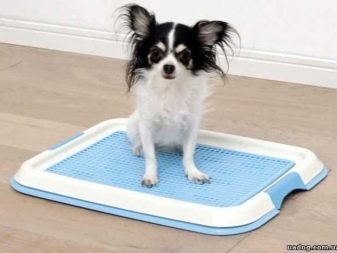

How to deal with behavioral problems?
Russian toyi are easily excitable dogs, responding to any external stimuli with fervent barking. It is not worth forgiving such behavior to the animal, but it needs to act much more subtly than with the owners of a coarser constitution. Keeping the dog from barking will not work either with the help of affection or threats. A certain plan of action will be optimal.
- If undesirable behavior is manifested, the dog should strictly command "Fu!" or "You can't!"
- The maximum that can be applied from the options for physical impact is a light slap with a newspaper.
- A puppy barking for attention can be ignored. It doesn't work with an adult dog.
- Unwanted physical reactions can be dampened with distraction. If your pet isn't hysterical, this might work.
From an excess of feelings, Russian TOi can slightly bite their owners. When trying to show emotions in this way, it is worth expressing indignation with intonations, but not physically punishing the animal. Any joint activities should be terminated immediately. For the expensive communication with the owner, this will be enough to reconsider your behavior.
You will learn how to bring up a Russian Toy in the following video.






































